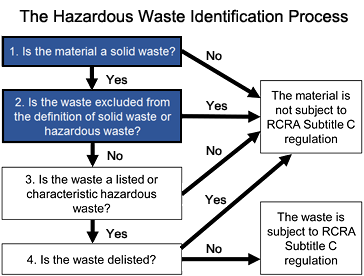About Reclaim Waste
About Reclaim Waste
Blog Article
9 Easy Facts About Reclaim Waste Described
Table of ContentsThe Facts About Reclaim Waste UncoveredReclaim Waste for DummiesSome Ideas on Reclaim Waste You Should KnowGet This Report about Reclaim WasteThe Only Guide for Reclaim WasteThe Greatest Guide To Reclaim Waste

Never place dangerous compounds down sinks, commodes or stormwater drains Compounds including petrol, oil, oil, pesticides and herbicides, and solvents such as paint pole dancers need to not be put down sinks, bathrooms or stormwater drains. These materials are difficult to eliminate in the sewage therapy process and cause contamination problems in our neighborhood rivers.

Fluid waste is a term that covers a wide variety of products, there's a great factor why leaving its disposal to the specialists is recommended. Liquid waste is non-solid product that has no more usage and must be treated and dealt with according to local, state and federal policies.
Not known Facts About Reclaim Waste
Instances of liquid waste can include wastewater, fats, oils or oil, used oil, fluids, solids, gases or sludges and hazardous house liquids, there are some that are thought about to be a lot more hazardous than others when it comes to the setting and the wellness of pets and human beings alike. It's because of this that each state and territory have strict guidelines connected to liquid waste management.
Liquid waste can be saved in holding tanks or packaged in drums, intermediate mass containers or accepted small containers before either being treated or eliminated through outsourced vacuum cleaner trucks. Given the nature of the products, fluid waste can not go in the basic waste stream and there are rigorous policies on how to get rid of it properly.
(https://anotepad.com/note/read/pkncyr85)Depending upon a decision of the level of threat, it might be needed to remediate those sites. In enhancement, harmful fluid chemical wastes are controlled waste and must be tracked in conformity with the state waste regulations. Under the chain of custody and duties, proprietors are liable and responsible for waste generated by a business.
One of the core applications for superabsorbent polymers (SAPs) is fluid waste solidification. liquid waste disposal. SAPs are utilized by waste administration professionals to avoid potentially hazardous fluids from going into waterways, groundwater aquifers, and various other delicate atmospheres. Because liquids can rapidly move pollutants into environmental receptors and potentially add to geotechnical failures, liquid wastes are virtually always banned from disposal in garbage dumps
8 Simple Techniques For Reclaim Waste
Essentially, totally free liquids are fluids that divide from the strong section of waste material. Liquid waste can include the following: HDD mud and cuttings Land fill leachate Wastewater treatment sludge & biosolids Dredged debris Oil and gas drill cuttings Clearing up pond muck Hydro Excavation slurry Coal burning residuals/ash Tank bottom sludge Concrete grinding/polishing slurry Related Article: For a sensible example of free liquids separating from waste material, consider the following situation: A waste administration professional tons a dump vehicle with sludge from a wastewater treatment plant's aeration container, during a regular maintenance occasion.
When the driver shows up at the garbage dump, he notices water leaching from the sludge and putting from the dump truck. The load was denied by the land fill and the chauffeur was required to get rid of the waste as a liquid waste at a special center, which enhanced the disposal fees significantly.
We likewise need to be liable for the proper disposal of our waste products. It is not enough that we pay waste disposal firms to take treatment of our rubbish.
Top Guidelines Of Reclaim Waste

Segregating your waste can begin inside the home. Segregate dry and liquid waste as well as edible waste, eco-friendly and non-biodegradable materials.
You can utilize old trash can, pail, yard pot or old plastic drums. Drill 4 to 5 holes in the container so the air can flow. Layer all-time low with dirt to absorb the damp waste. Start the composting procedure. Layer the compost with damp and dry waste as well as soil to maintain a balance in between the wet and the completely dry.
Getting The Reclaim Waste To Work
To help with faster decomposition, you can also include semi composted dirt to the garden compost. If you see the odor is coming to be too strong, include added newspapers and paper waste or add even more openings to the compost bin to keep the balance of the waste products.
We additionally need to be responsible for the appropriate disposal of our waste materials. It is not enough that we pay waste disposal firms to take treatment of our rubbish.
Our waste, our responsibility. Have you ever before wondered what occurs to your fluid waste after it's gathered? Did you understand that fluid waste can be recycled? As responsible people, you ought to recognize what occurs to your rubbish and where it goes after it is taken away from you. Comprehending the fluid waste removal procedure is essential in assisting you to segregate your waste.
The 10-Minute Rule for Reclaim Waste
Segregating your waste can start inside the home. Segregate dry and liquid waste as well as edible waste, eco-friendly and non-biodegradable materials.
You can utilize old trash can, navigate here container, garden pot or old plastic drums. Drill 4 to five holes in the container so the air can circulate. Layer the base with soil to take in the damp waste. Start the composting process. Layer the compost with wet and dry waste as well as soil to keep a balance in between the damp and the dry.
To facilitate faster disintegration, you can additionally include semi composted soil to the garden compost. If you observe the scent is coming to be also solid, include added newspapers and paper waste or add even more openings to the garden compost container to maintain the balance of the waste materials.
Report this page